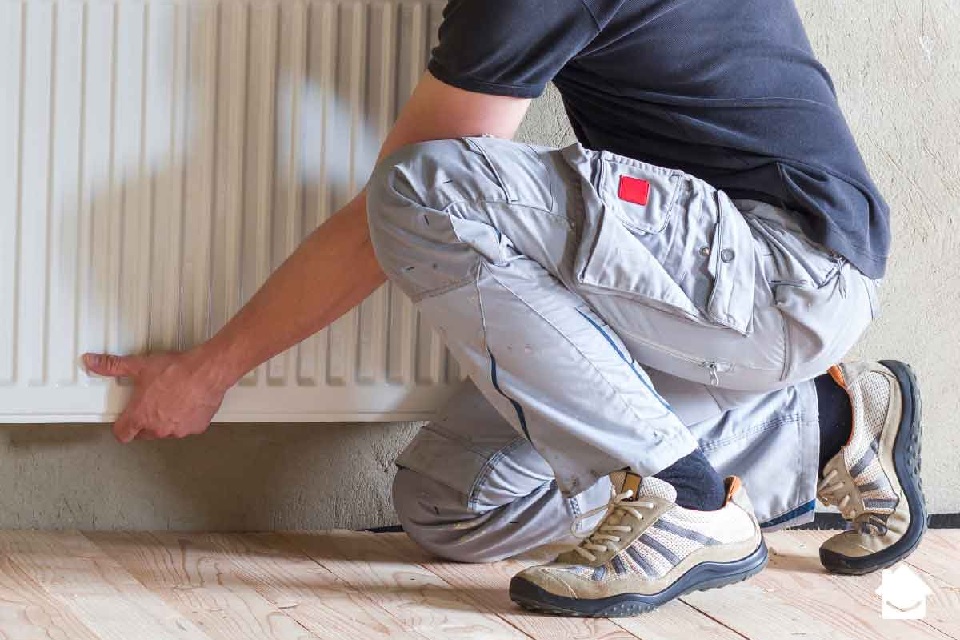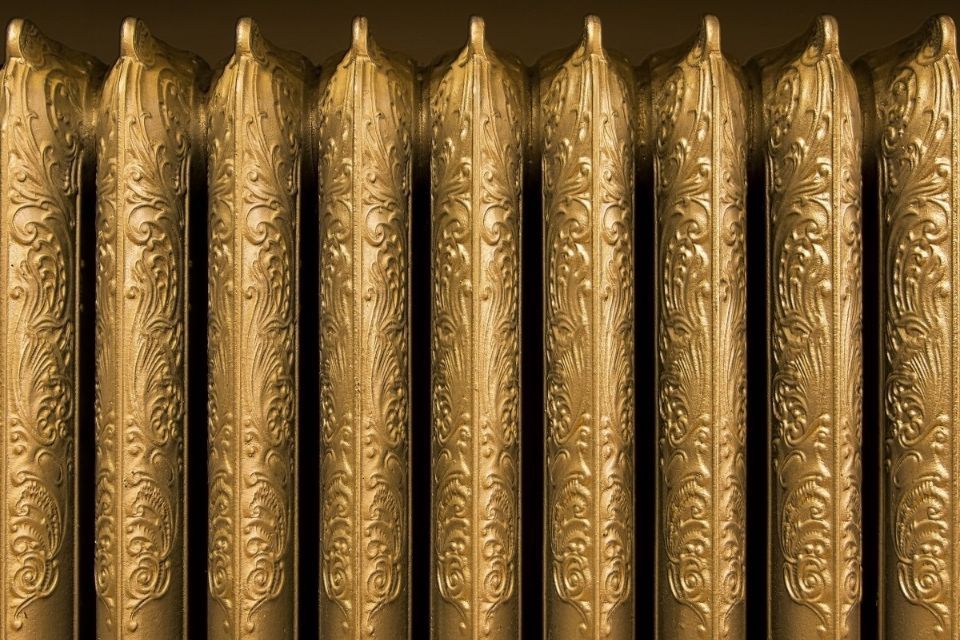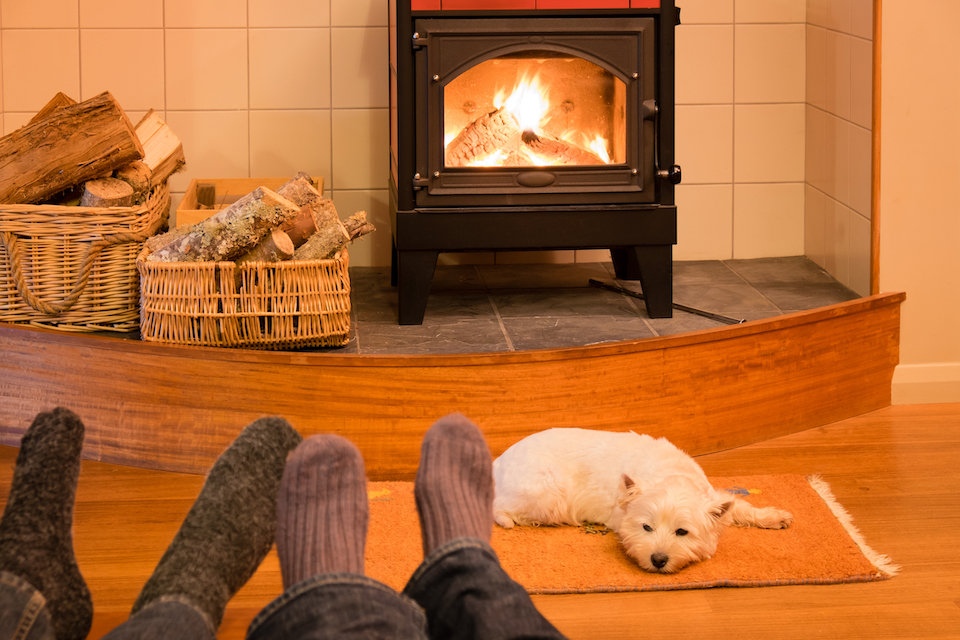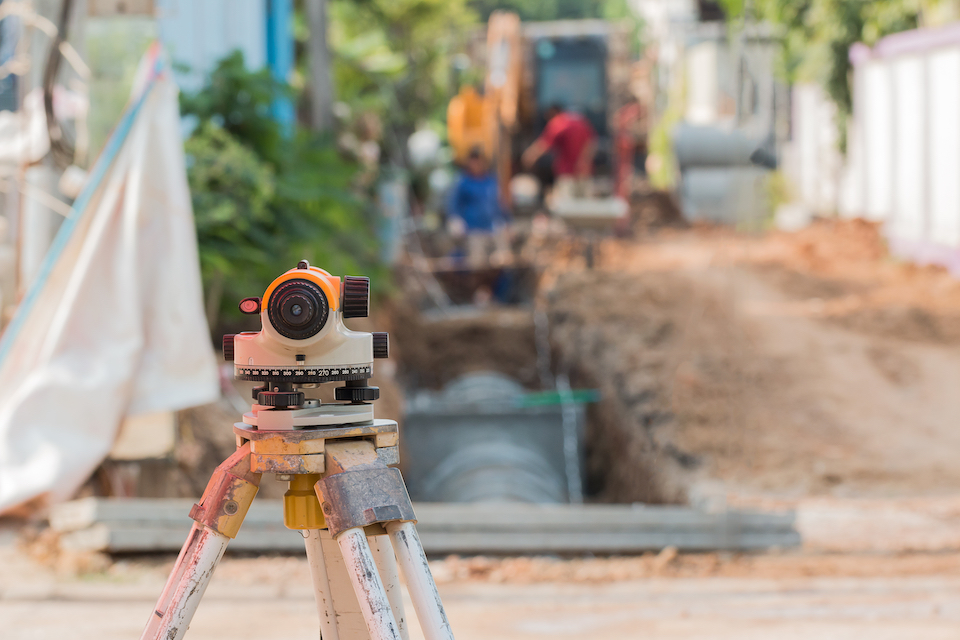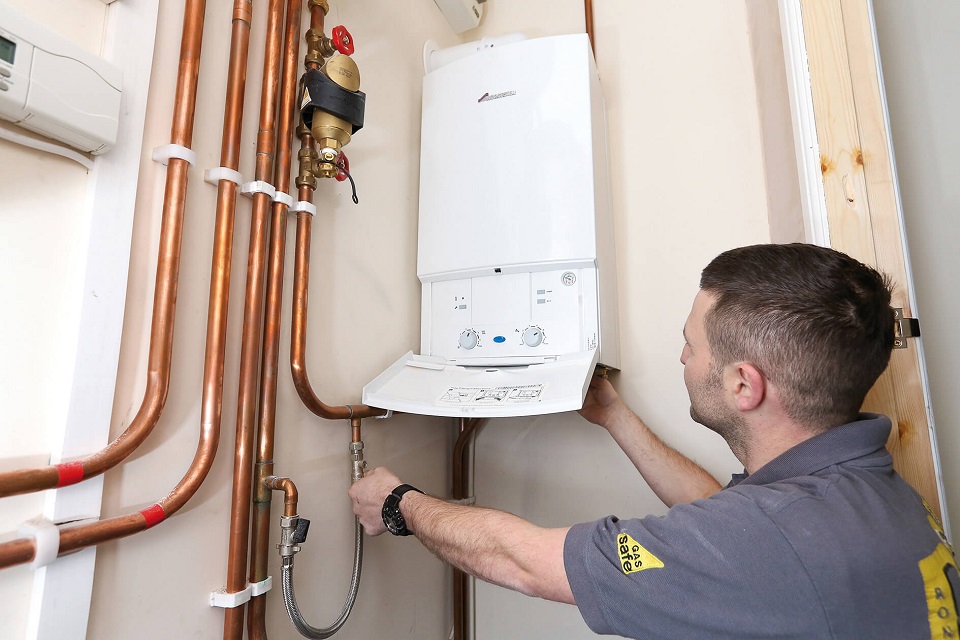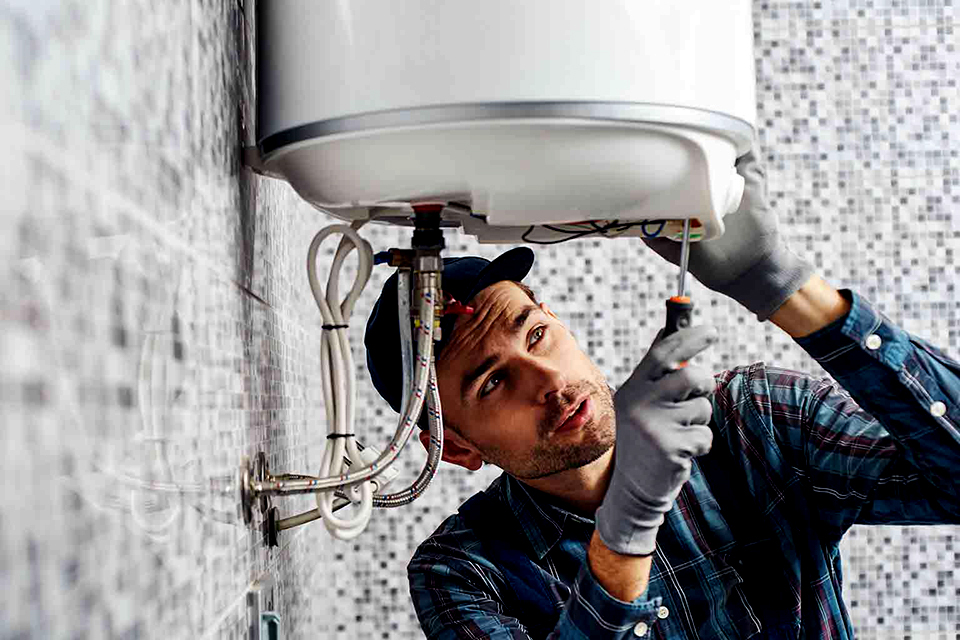Introduction to Radiator Problems
The following guide analyses different problems which can arise in radiators and how you can fix them. We will also discuss ways to prevent a radiator from breaking, the consequences of not fixing issues that emerge and the average price ranges for hiring a heating engineer.
This article will be helpful if your radiators are not working or if you want to avert issues arising in the first place.
Why is my Radiator Not Working?
In this section we will break down the possible reasons behind your radiator’s malfunction. We will discuss a variety of potential causes such as boiler issues and water pressure. Other problems that can emerge include that the radiator is not getting hot but the pipe is.
Boiler Issues
One of the most common problems related to one radiator not working or more are boiler issues. One possible hitch is that the boiler and therefore each radiator is not heating or/and there is no hot water. A broken diaphragm or airlocks can lead to this problem.
Kettling is another common issue whereby sludge or limescale has built up inside the boiler and is limiting water flow. This problem is called kettling as it often sounds like a boiling kettle. Other boiler issues include thermostat problems and a frozen condensate pipe.
Radiator Cold at Bottom
If the bottom of a radiator is cold, you may be inclined to increase the thermostat to bring up the heat. This can however lead to a rise in your heating bill. Your radiator may be hot at the top but cold at the bottom because of a blockage preventing a full water flow internally.
Fragments of rust, filthy water and limescale can easily build up inside a radiator. Such a blockage can prevent heat from reaching the bottom of the radiator and can affect your central heating system.
Radiator Cold at Top
Similarly, a radiator may be cold at the top but warm at the bottom due to a build-up of particles such as those of limescale and rust in and around the top of the radiator. Once more this can impact on your central heating system.
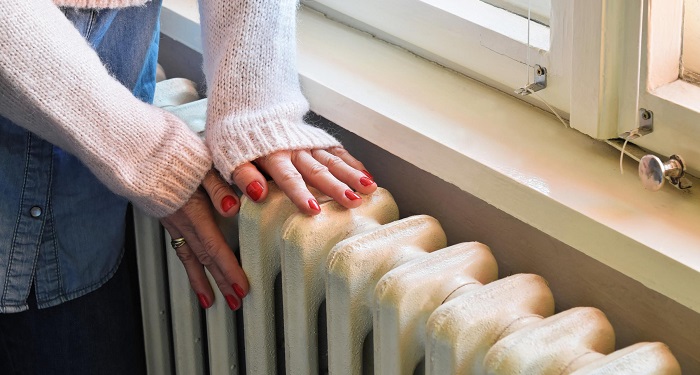
Heat Pump Isn’t Working
A central heating pump is located behind the boiler casing. There are several reasons why a heat pump might stop working. The pump may still be running but failing to pump water. This may be due to a propeller or shaft malfunction although it may also be related to motor problems.
It could also be that your heat pump is blocked or that airlocks have built up inside. While it’s unlikely, another possible reason is that the heat pump was installed incorrectly.
Other possible explanations include pump speed settings being incorrect, a leaking pump, a lack of power to the pump or perhaps that the pump won’t power down.
Stuck Valves
Pressure valves could become stuck leading to overheating since your thermostat heat is not matching with the heat actually being pumped into your radiator by the pressure valve. This happens when the valve is stuck in an open position. Wear and tear with time or thermostat problems can lead to a stuck valve.
Water Pressure
The two primary causes of low water pressure in a radiator are leaks and bleeding radiators. A leak could occur anywhere in the boiler system and even the smallest leak can eventually lead to a reduction in water pressure.
If this is the case, you may notice damp patches near the pipes, boiler or/and radiators. The other most common explanation is that if you recently bled a radiator, it may have caused a drop in water pressure since bleeding a radiator allows air to escape.
How to Fix a Broken Radiator
Each cause of a broken radiator can have unique solutions which we will explore in this section. We will discuss methods to fix the aforementioned radiator problems including heat pump failure and stuck valves.
You may or may not choose to hire a heating engineer to repair your radiator. Some fixes will be more suitable for hiring a professional to solve than others.
How to Fix Boiler Issues
Different solutions will be needed for different boiler issues. Airlocks are one of the more common problems in boilers. To remove airlocks, one solution is to place the ends of a hose pipe on a hot and cold tap and then allow water to flow from the cold tap and into the hot tap to remove any airlocks.
You should repeat this up to eight times with the cold tap turned on for 3-5 second intervals. If the issue is kettling or a build-up of sludge and limescale then you will need to flush out these particles. You can solve this problem by bleeding out the radiator.
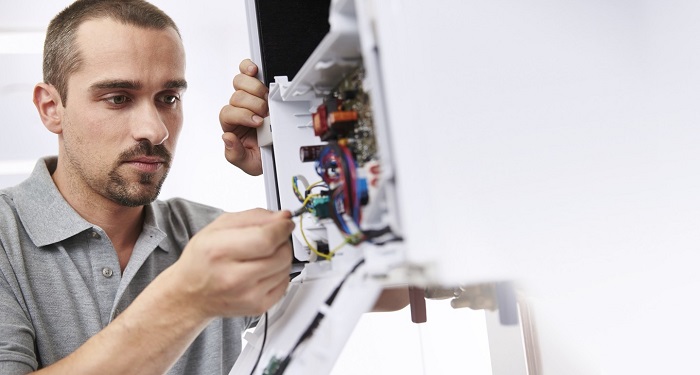
In order to do this, first turn off the radiator, place sheets beneath the radiator to catch any sludge, turn off the valves and then bleed out the radiator. A radiator can be bled by opening the bleed valve, draining the radiator before closing the bleed valve.
You can then remove the radiator from its positioning and hose it down to remove any further sludge or limescale if you wish. Undertake these steps in reverse and the problem should be solved.
How to Fix a Radiator That is Cold at the Bottom
Blockages at the bottom of your radiator caused by sludge and particles of rust and limescale can be fixed by bleeding out the radiator.
This can be done in the same way as discussed above, by turning off the radiator, placing sheets beneath the radiator, turning off the valves and bleeding out the radiator by opening the bleed valve, draining the radiator, closing the bleed valve before removing the radiator so that it can be hosed down.
Once more, you should complete these steps in reverse to complete the process.
How to Fix a Radiator That is Cold at the Top
For blockages at the top of a radiator, you should bleed the radiator following the same steps mentioned above.
How to Fix a Heat Pump that Isn’t Working
If your heat pump is running but failing to circulate water, a simple light tap may prove effective. However, if it’s a problem that comes and goes then it may be past its time. In this case a replacement pump should be installed which will likely cost somewhere in the range of £200 to £250, which includes installation and supply costs.
To fix a blocked heat pump, you should employ a hot flush using chemicals. If the problem is subsequently solved, you may consider installing a magnetic system filter which can prevent this issue from repeating. Airlocks in a heat pump can possibly be solved by very slowly turning the pump’s bleed screw. It should only be opened by about a quarter of a rotation.
A small amount of water may leak out as the airlocks are being fixed. In the unlikely event that the heat pump was incorrectly installed, you can fix this by switching around its position. Before doing this, you need to ensure that the system is drained down.
You can refill the system after with the filling loop that will be attached to the boiler. This must be done once you’ve refitted the heat pump correctly. If you think the pump speed settings are off, you can investigate this problem by looking for a switch atop the boiler pump.
If it is set to just 1 or 2 then this may be too slow of a speed. You can improve the flow rate by changing it to 3. If you are unsure of anything, you should consider consulting a professional first.
If there is a leakage in the pump, first ensure that the pump is fully secure before inspecting any fittings present on the pump. If the first two checks are good, then take a look at the pump’s joint. You may need to replace the seal or pump.
If the pump lacks power, first check that the fuse hasn’t blown and look for leaks. If all else fails, a replacement may prove the only viable solution. To fix a pump that won’t power off, check that the printed circuit board (PCB) is working, then investigate whether the pump overrun stat is functioning properly before checking whether the mid position valve is sticking.
If the first two are malfunctioning, then replacements can solve the problem. As for the mid position valve, it can be lubricated using a spray such as WD-40.
How to Fix a Stuck Valves
If a radiator valve is sticking, you should first turn the valve to its highest setting before removing the head. Inside the head you will notice a piston. If working correctly, it should be moving however with a stuck valve, it will be stationary or seized.
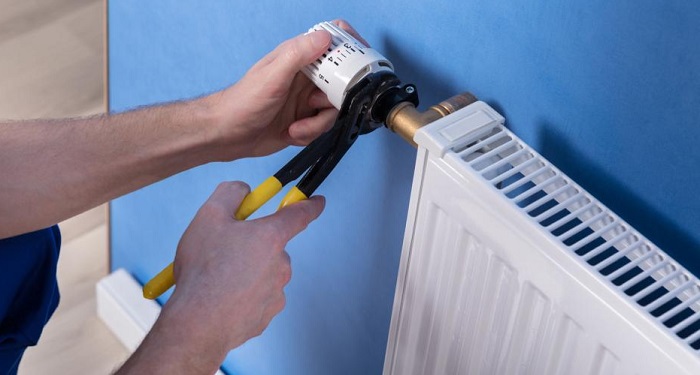
A lubricant such as WD-40 can be utilised to loosen a piston. Once loosened, press it into place. If this fails, then you may need a replacement valve, or you could hire a heating engineer to help solve the problem.
How to Fix Water Pressure
If a leak is causing a reduction in water pressure, you will first need to identify exactly where the leak is occurring. You should have a bucket and towels ready for any water leaks that might occur while trying to solve the problem.
By covering the radiator and its parts in toilet paper, any leaks will cause the toilet paper on that spot to become damp and this will allow you to identify where the leak is located. If the leak is coming from the radiator body itself, it’s most likely being caused by corrosion and thus a new radiator body is probably necessary.
The exact requirements for solving a leak if present on a specific part of the radiator can vary greatly. PTFE tape can usually be employed in either case with the exception of the radiator body.
If you have a radiator valve leakage, you should first drain the water below the leak, lock the shield valve and turn off the supply before catching the water which pours out and then undo the union nut.
Next, open the bleed valve to let out more water, wrap the tip of the valve in PTFE tape, re-tighten the union nut and then open the bleed and lockshield valves. Give your radiator time to fill up. Check there are no more leaks present before closing the bleed valve.
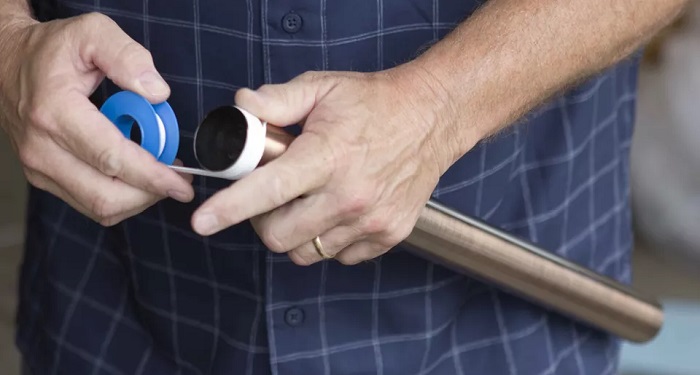
If the leak is coming from a radiator spindle, you may need only to tighten the gland nut with a spanner. If this doesn’t work, wrap the gland nut in PTFE tape before re-tightening. If you have a radiator gland leakage, first turn on the valve.
If water drips out from beneath the cap, you need to turn off the lockshield valve. Remove the plastic cap and then loosen the gland nut. Wrap the valve spindle in a 20 cm piece of PTFE tape, employ a flat-headed screwdriver to push the tape into the valve’s body before screwing the nut back into place, replacing the plastic cap and turning the valve back to on.
For a radiator pipe joint leak, you’ll need to drain your radiator until the water level has dropped below the point of the leak. With a spanner, remove the nut from the pipe where the leak is present before wrapping PTFE tape around the pipe at the position where the olive and joint meet. Then tighten the nut back into place.
How to Balance a Radiator
We will now look at balancing a radiator. We will explain what balancing a radiator is, how it can be done and discuss what the signs are that you need to balance your heating system.
Balancing a radiator means adjusting your radiator valves to ensure that there’s an even diffusion of heated water being distributed to every radiator in your home. The first step entails bleeding all radiators, turning off the central heating and giving time for each radiator to cool.
Remove the lockshield valve of every radiator. For radiators without a lockshield you may need to remove the wheelhead valve or a thermostatic valve where present. Either way, the appropriate valve should be turned anticlockwise.
A plastic adjuster or an adjustable spanner will be required to remove the lockshield while the other valves can be removed by hand. We will break down the rest of the process by discussing lockshield valves, but the same steps will apply to wheelhead and thermostatic valves.
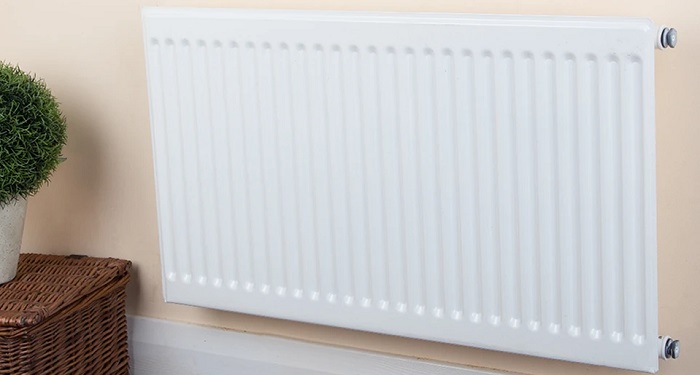
Turn on the central heating and write down the order in which the radiators have warmed up. Turn the heating off again and allow the radiators to cool. Once they’ve cooled down, turn the central heating on and go to the first radiator on your list (that heated up first).
Twist the lockshield clockwise until it's tightened and closed. Then open it by a quarter of a rotation. Take a temperature reading of the pipes that lead to one of the valves on this radiator. You can utilise pipe and radiator thermometers for this purpose.
Gradually turn the lockshield until there’s a difference of 12°C compared to your initial measurement. Go along each radiator in your home and reach a suitable temperature for each radiator. It’s likely that the further the radiator is from the boiler, the more the valve will need to be opened.
By adjusting these valves, you can balance all of the radiators in your household. The two key signs that your radiators need to be balanced are that the radiators furthest from the boiler are cooler or/and take longer to heat up than those nearest.
How to Bleed a Radiator
In this section we will analyse how to bleed a radiator in more detail. We will look at topics such as why someone would need to bleed their radiator and how it can be achieved. Bleeding a radiator means releasing air that has become trapped internally.
You may need to bleed a radiator because trapped air is restricting water flow and creating cold spots where heated water has not reached. This can cause a radiator to be hot at the top, cold at the bottom and vice versa and you may even find that you have the issue of your radiator not getting hot at all.
Fixing this is important as the problem can reduce how effective your radiator is and if unsolved, you may end up compensating by bringing your heating up and therefore increasing your heating bill. Signs that your radiator requires bleeding include hearing a clucking, gurgling or flowing sound coming from your radiator.
Other signs are that the radiator is taking a lot of time to heat up, the top is noticeably colder than the bottom or in extreme cases, you could have a cold radiator all round.
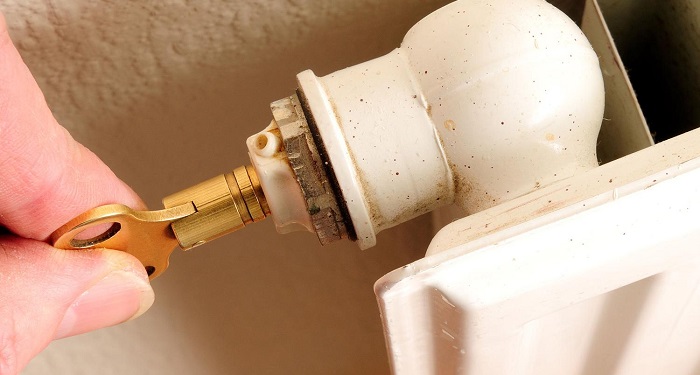
In order to bleed a radiator, you must first either turn off your central heating or the radiator in question. Place some old towels beneath the radiator to prepare for any water leaks during the bleeding process.
The next step is opening the bleeding valve. Gently turn the bleeding valve anticlockwise by about a quarter of a rotation. You should hear a quiet hissing sound as air escapes. Continue to hold until the sound stops, and only water is dripping from the bleeding valve.
Then turn it clockwise and close the valve. Do not tighten it too much, just enough for it to comfortably go back to its original place. You may also choose to remove the radiator from its positioning so that it can be hosed down if you wish to remove any extra limescale or sludge.
This may or may not be necessary. Complete the process in reverse and this should solve any present issues.
How to Prevent Radiators from Breaking?
Prevention is often better than the cure and, in this section, we will look at what steps you can take to prevent a radiator from experiencing faults. We will discuss different measures you could take such as regular boiler service.
Regular Inspection
One of the best ways to prevent your radiators from having problems is to inspect them regularly. You should regularly check for leaks. While water puddles are an obvious sign of a leakage, water stains around and beneath your radiator can be more subtle. You should also frequently check the individual parts of your radiator to ensure that none are cracked or overly worn.
Cleaning
Cleaning your radiators often will also help to maintain them in the long-term. Since the effectiveness of radiators depend on convection currents, it’s important that dust is not prohibiting optimal air flow. Therefore, clearing dust from your radiators on a regular basis will help to prevent air flow problems that could lead to damage.
Keeping Your Radiators Clear
As with cleaning your radiators, it’s also vital that you keep your radiators clear of anything that might obstruct its air flow. Furniture and curtains can be common culprits in this regard. By keeping your radiator clear you will reduce the chances of something going awry
Boiler Service
You should get a boiler serviced roughly every 12 months. Annual boiler service will help to spot problems before they worsen. Boilers also require maintenance to maximise safety and longevity.
Bleeding Radiators
Even if your radiators are not showing signs that they need to be bled, bleeding your radiators every so often can help to prevent any hidden issues from exacerbating over time. Bleeding your radiators once a year, unless needed more often, is a good target.
What Can Happen if I Don’t Fix my Radiator?
Failure to fix problems that arise with a radiator can lead to many hazards which we will discuss in this section. We will look at potential hazards such as a broken boiler and central heating problems.
Broken Boiler
Failure to fix problems related to your boiler and to have sufficient maintenance undertaken can lead to more extensive problems for your boiler and heating system as a whole.
Broken Central Heating
A broken central heating pump can cause problems for the entire heating system if not dealt with. If left unresolved, a broken central heating pump can cause internal damage and deterioration of a radiator’s heating performance. Central heating radiators need to be maintained for their own sake as well as for the benefit of the heating system in general.
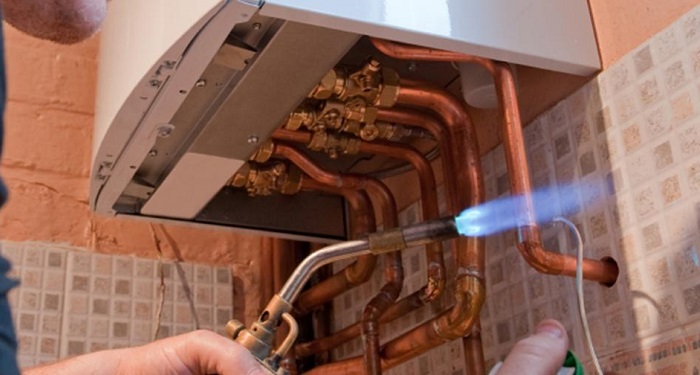
Damaged Radiator
Cracks or damage to your radiator if left unfixed may result in your heating not working. It could alternatively lead to overheating which in some cases can even cause a fire.
Broken Diaphragms
A broken diaphragm on a radiator may cause damage to the radiator’s heating system as the heating may become intermittent or fail to work at all. This can lead to wear and tear due to more frequent temperature fluctuations.
Heating Engineer Cost
We will now break down the costs involved in tasks such as getting a radiator fixed and the cost of getting a heating engineer in an emergency.
| Task | Price |
|---|---|
| Heating Engineer Charge (Hourly) | £20 to 40 per hour |
| Heating Engineer Charge (Daily) | £160 to £550 per day |
| Emergency Heating Engineer Charge (Hourly) | £40 to £60 per hour |
| Boiler Repair | £150 to £400 |
| Bleed 5-10 Radiators to Fix Cold Spots | £80 to £100 |
| Bleed 10-15 Radiators to Fix Cold Spots | £100 to £150 |
| Heat Pump Replacement | £200 to £250 |
| Valve Repair | £50 to £150 |
| Water Leakage Repair | £50 to £150 |
FAQs
Q: How do radiators work?
A: Radiators have an internal closed loop for heated water which is pushed in by a pump.
Q: Why are my radiators getting hot when the heating is off?
A: This is likely due to a faulty diverter or one that has become blocked. This can result in hot water flowing into a radiator.
Q: How often should you clean a radiator?
A: While cleaning once a year should be enough, cleaning your radiator every week has its advantages.
Q: What is the average life expectancy for a radiator?
A: A radiator’s life expectancy is about 8 to 12 years.
Q: How much will it cost to get a new radiator installed?
A: For most of the UK, it will cost about £100 to £200 to get a new radiator installed. However, in London, where prices for installation work tend to be higher, it will cost roughly £200 to £300.
Sources
- https://www.britishgas.co.uk/home-services/boilers-and-heating/guides/boiler-pressure.html
- https://heatable.co.uk/boiler-advice/boiler-not-working
- https://www.lenehans.ie/how-to-balance-radiators
- https://www.viessmann.co.uk/heating-advice/how-to-bleed-a-radiator
- https://www.npower.com/help-and-support/guides/how-to-bleed-a-radiator/
- https://www.radiatorvalvesonline.com/blog/radiator-maintenance/
- https://www.viessmann.co.uk/heating-advice/when-does-a-boiler-need-its-first-service
- https://sse.co.uk/help/home-services/bleeding-a-radiator
- https://heatingforce.co.uk/blog/boiler-gas-valves/#Gas_Valve_Repair_Costs

